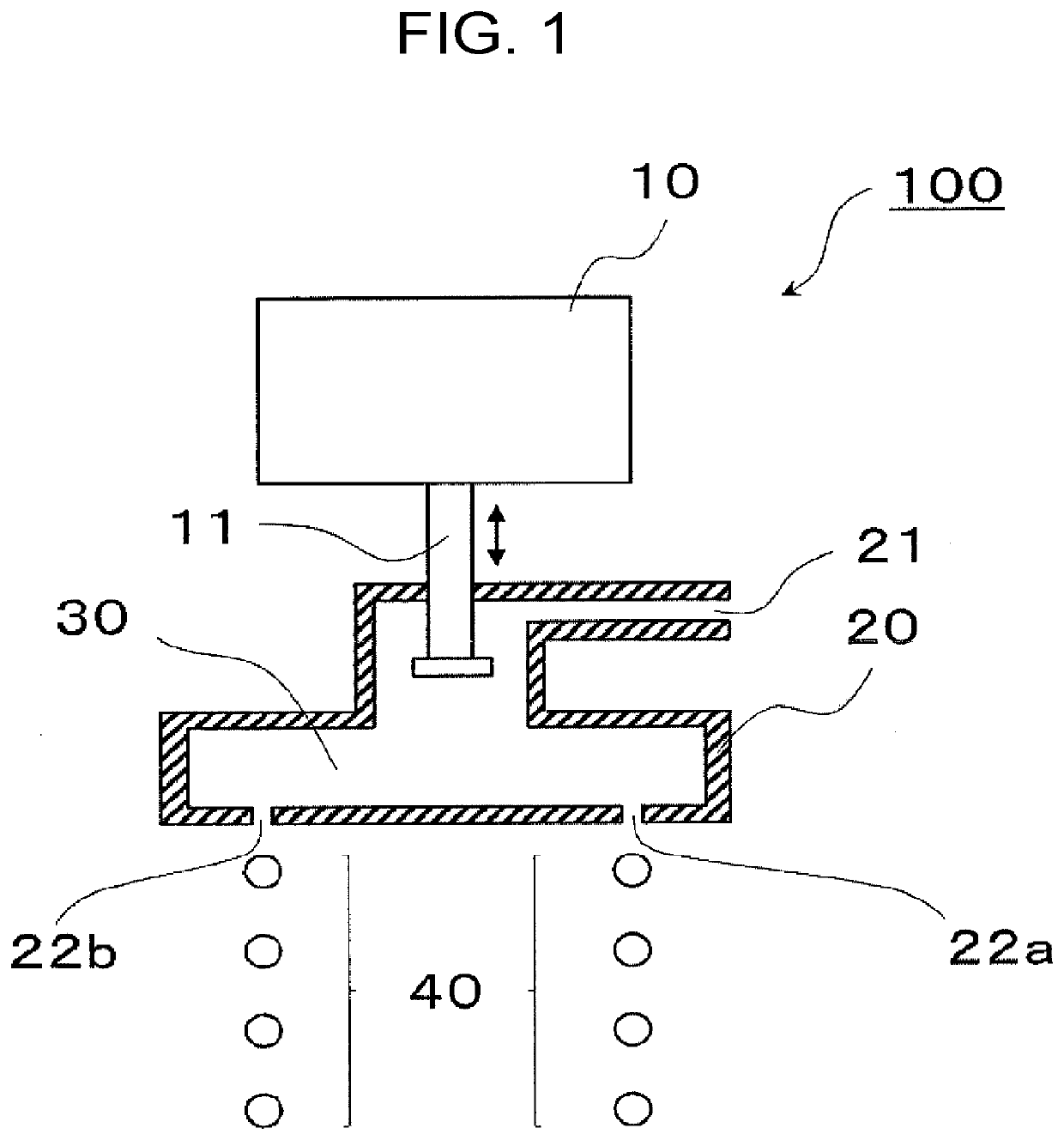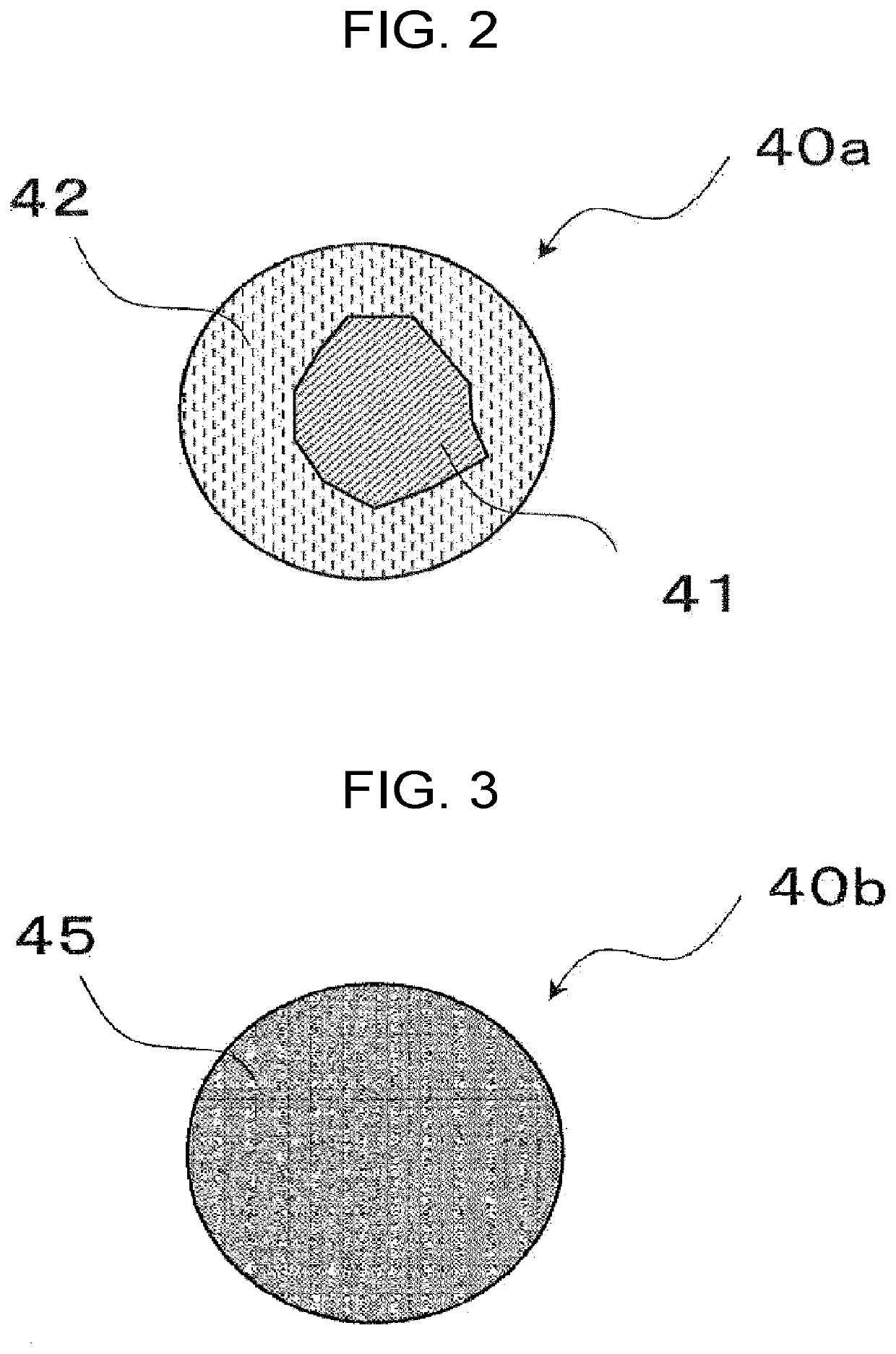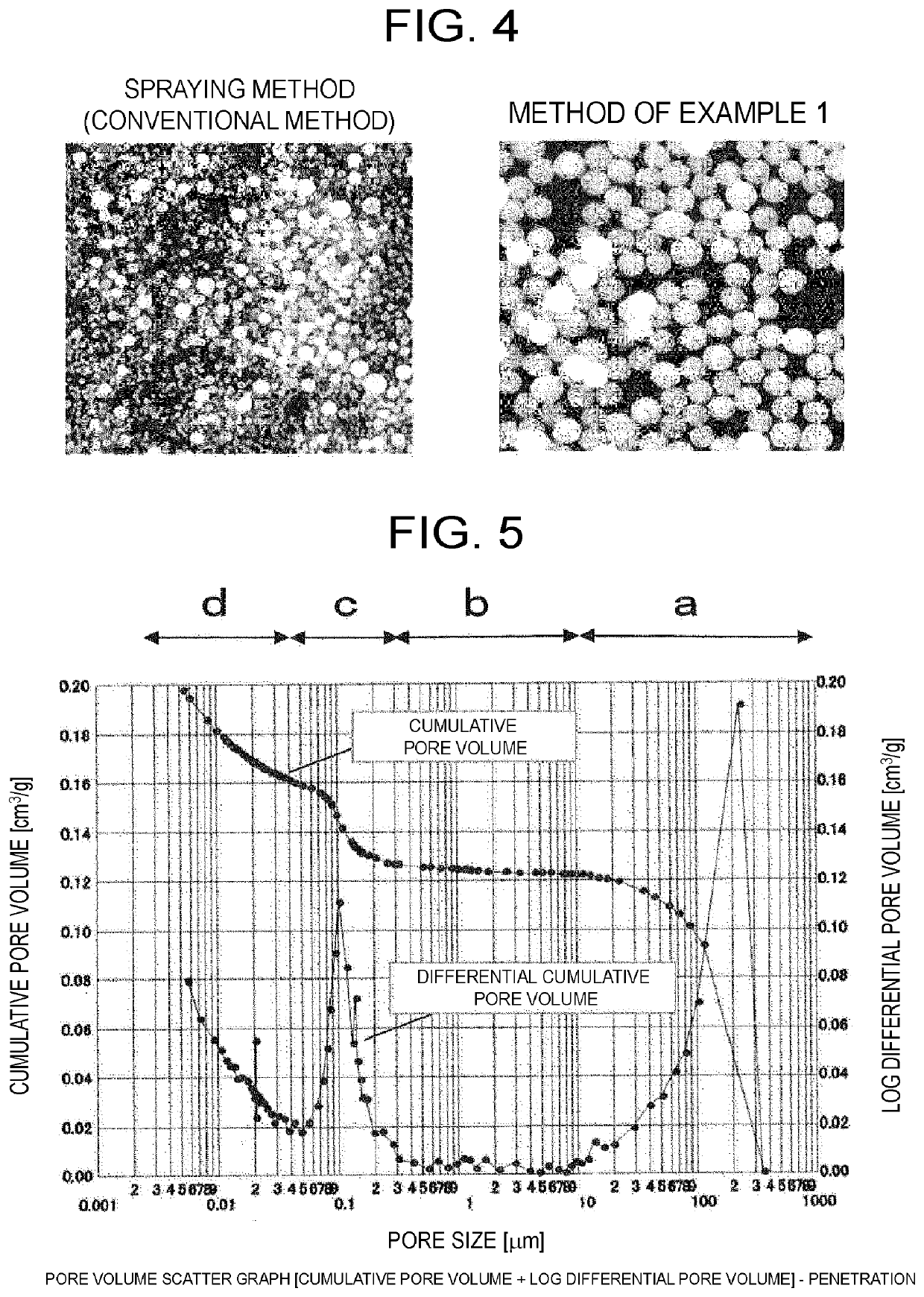Production method for rumen-bypassing preparation, and granules obtained by means of production method for rumen-bypassing preparation
a production method and technology of a production method, applied in the field of rumen-bypassing preparation, can solve the problems of reduced utilization efficiency affecting the quality of granules obtained by this method, and easy collapse of enlarged dosage forms, etc., to achieve high long-term storage stability, low cost, and resistance to dissolution
- Summary
- Abstract
- Description
- Claims
- Application Information
AI Technical Summary
Benefits of technology
Problems solved by technology
Method used
Image
Examples
example 1-2
Analysis of Obtained Granules
[0058]The granules having particle sizes of 1000 μm to 1519 μm were obtained from the obtained granules according to the sieving method of the Japanese Pharmacopoeia, and the granules were analyzed in further detail. In this example, especially the distribution of the pore size was analyzed.
[0059]The pore size was measured by mercury penetration using a mercury porosimeter. The pores size was measured using AutoPore III (manufactured by Micromeritics Instrument Corp.). The above-obtained granules having particle sizes of 1000 μm to 1519 μm was deaerated, mercury was penetrated into the granules. The relationship between the amount of mercury penetrated into the granules and the pressure applied at that time was investigated. The pores size was calculated by the Washburn Equation:
D=−4γCOS θ / P
wherein D is a pore size, γ is the surface tension of mercury (namely, 480 dyn / cm), and θ is the contact angle between mercury and the wall surfaces of pores (namely...
example 1-3
Test of Obtained Granules
[0062]Granules having particle sizes of 1000 μm or more was contained in the granules obtained in the above-mentioned Example 1-1 at a high rate. Since it was considered that granules having large particle sizes had high resistance to dissolution in the rumen, in this example, the dissolution resistance of the granules obtained in Example 1-1 was examined using simulated ruminal fluid. The dissolution resistance was specifically confirmed in the following procedure.
[0063]100 kg of hydrogenated palm oil was melted at 72° C. To the melt was added 6.25 g of vitamin D3 dissolved in soybean oil, and the mixture was stirred homogenously. The obtained solution was fed to a vibrating granulating device having die holes diameter of 0.7 mm, vibration at 1000 to 10000 Hz was applied, and the obtained solution was injected into cool air. Granules of the solidified rumen-bypassing vitamin D3 having particle sizes of 1000 μm to 1519 μm was collected separately, and the di...
PUM
 Login to View More
Login to View More Abstract
Description
Claims
Application Information
 Login to View More
Login to View More - R&D
- Intellectual Property
- Life Sciences
- Materials
- Tech Scout
- Unparalleled Data Quality
- Higher Quality Content
- 60% Fewer Hallucinations
Browse by: Latest US Patents, China's latest patents, Technical Efficacy Thesaurus, Application Domain, Technology Topic, Popular Technical Reports.
© 2025 PatSnap. All rights reserved.Legal|Privacy policy|Modern Slavery Act Transparency Statement|Sitemap|About US| Contact US: help@patsnap.com



